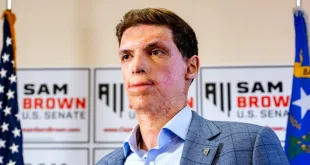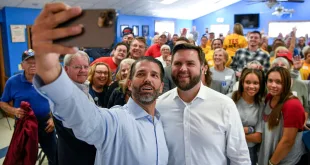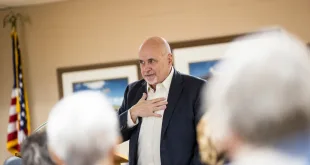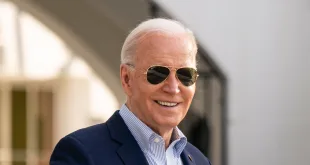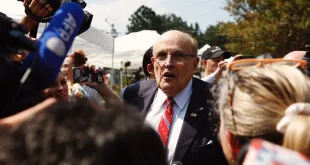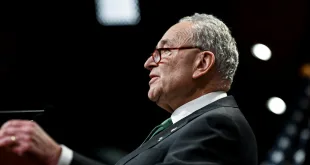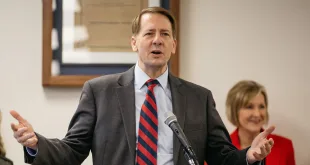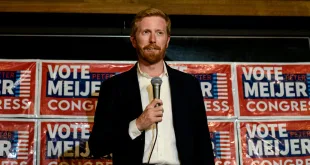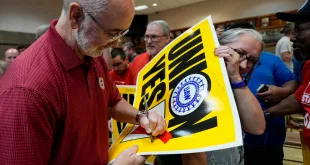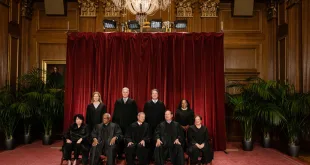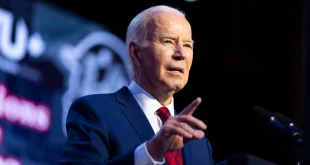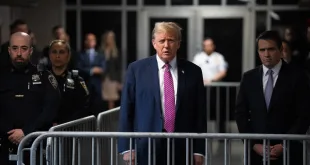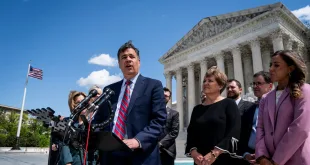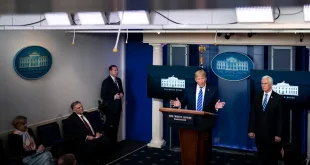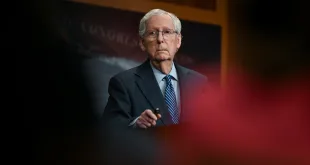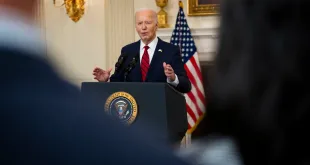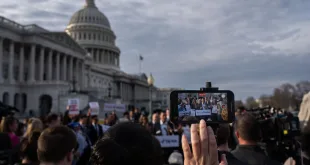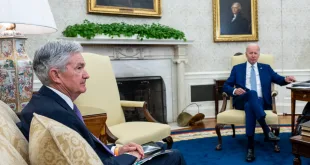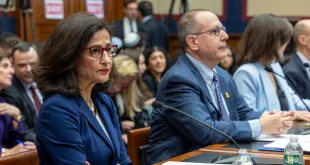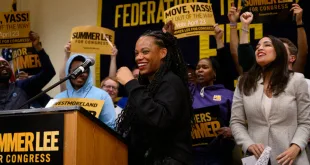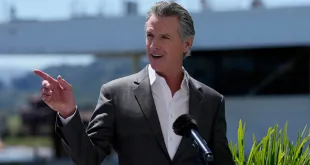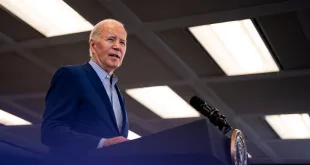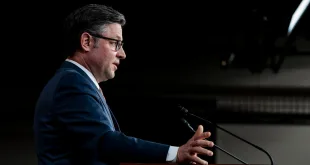President Biden made a populist case for re-election during his swing through Pennsylvania over three days last week, laying out plans on tariffs and taxes and seeking to burnish his working-class bona fides as a son of Scranton.
But he also used the trip to sharpen the story he tells about former President Donald Trump, depicting him as a creature of rarefied playgrounds like Mar-a-Lago and a pawn of the billionaires who frequent them.
“He learned the very best way to get rich is to inherit it,” Biden said in Scranton. “He learned that telling people, ‘You’re fired,’ was something to laugh about.”
Twelve years ago, Democrats including then-Vice President Biden relentlessly pilloried a different wealthy Republican as an elitist: Mitt Romney, who was once a Massachusetts governor and chief executive of Bain Capital who won the Republican presidential nomination during a burst of national anger over Wall Street excess. Democrats poked fun at his wealth — remember the car elevator? — and slammed him for his free-market views on the auto industry bailout and the foreclosure crisis.
Those attacks stuck, and Barack Obama beat Romney to secure his re-election as president. Now, in 2024, Biden is seemingly trying to Romnify Donald Trump as he attempts to wear down the former president’s own populist claims.
It may not be easy. Sure, Trump frequently boasts about his wealth, spends much of his spare time on expensive pastimes like golf, and lives at Mar-a-Lago, the opulent property he owns that contains a private club. But he has always been able to convince the voters who make up his base that he gets them.
“Trump has made a cultural connection with working people that has benefited him. Part of it is manner, part of it is his TV persona, part of it is his preternatural ability to sense grievance and exploit it,” said David Axelrod, a Democrat who was a senior strategist for both of Obama’s presidential campaigns.
But the Biden campaign is also evoking a second, less remembered element of the attacks on Romney, which were at their core an attempt to contrast Obama from Romney and portray the latter as ill-equipped to manage a fragile economy while looking out for regular people.
“You’re not turning him into Mitt Romney, you’re prosecuting his record, which has been very much to the benefit of wealthy people at the expense of the working class,” Axelrod said, adding, “They’re beginning to bring the alternative into sharper focus here.”
The Romney caricature
Wealth, on its face, has never been something voters find disqualifying. George Washington was fabulously wealthy. President John F. Kennedy and both President Roosevelts came from families with large fortunes — and Biden and other Democrats hold Franklin D. Roosevelt as an icon.
So in 2012, the Obama campaign itself focused on the idea that Romney’s wealth — he was thought to have a net worth of as much as $250 million or more — and his business career left him out of touch with most people’s lives, and with the needs of an economy still recovering from the shock of the 2008 financial crisis. They pilloried him for his association with private equity, for talking about his friendships with the owners of professional sports teams and for leaked comments in which he dismissed “47 percent” of Obama’s supporters as, essentially, freeloaders.
“We didn’t spend our time saying, Romney was a rich guy,” said Joel Benenson, a Democratic strategist who worked on both Obama campaigns and Hillary Clinton’s campaign in 2016. “His own words did him in.”
The real goal, veterans of Obama’s 2012 campaign said, was to convince voters that Obama was better positioned than Romney to fight for most voters’ economic interests.
The message was, “We need to build an economy from the middle out, not the top down,” Benenson said, adding that Romney “could not own that territory against Obama.”
Some veterans of that campaign see a parallel between that approach and the one Biden can take in 2024.
Taking aim at Trump’s wealth
On a summer day in 2016, Hillary Clinton, then the presumptive Democratic nominee, went to Atlantic City and stood in front of a failed Trump casino project to make a different kind of attack on his wealth: It was the result, she said, of reckless business practices.
“People get hurt,” she said, “and Donald gets paid.”
It was part of a larger strategy Clinton was employing to highlight Trump’s business failures and to cast doubt on his tales of wealth and fabulous success.
“On the Clinton campaign, we tried, ‘He’s not as rich as you think, he’s probably not actually a billionaire, he doesn’t pay his bills, he went bankrupt,’” said Jennifer Palmieri, a Democratic strategist who directed communications for Clinton’s campaign.
But, Palmieri said, it was too difficult to shift people’s longstanding perception of a figure who had been spinning his own mythology in tabloids and television shows for decades.
That portrayal of Trump “was just too much at odds with what the public thought him to be, which was a decisive billionaire from ‘The Apprentice,’” Palmieri said. “It just didn’t connect.”
In 2020, the Biden campaign tried a different approach, casting the election as a clash between two different economic worldviews: Scranton vs. Park Avenue. And now, Palmieri said, the campaign has even more to work with.
“The difference between the argument we tried to make and the argument Biden can make is there are now two records — not just a record for Trump, but a record for Biden,” she said.
On the campaign trail, Biden has sought to tie his stories about Trump’s biography directly to issues of policy, repeatedly hitting Trump for his 2017 tax cuts, which benefited the wealthy. He has sometimes replaced the Scranton vs. Park Avenue frame with a Scranton vs. Mar-a-Lago frame — a shift that partly reflects the fact that Trump now lives at his Florida property, but that also evokes the wealthy campaign donors he entertains there.
“He wakes up in the morning at Mar-a-Lago thinking about himself. How he can help his billionaire friends gain power and control, and force their extreme agenda on the rest of us,” Biden said in his Scranton speech that also invoked leaked footage of Trump praising his guests’ wealth and promising them tax cuts.
“Trump wants to renew another round of billionaire tax breaks and corporate giveaways,” Biden said, promising that his tax plan would raise the minimum tax rate for billionaires and corporations and expand the child tax credit.
The Trump campaign did not respond to a request for comment, but last week a spokeswoman said Trump’s tax cuts were the largest in history.
Trump has often tried to fight any perception that he is an elitist — using his penchant for well-done steaks, for example, as a counterpoint to his love of gold leaf on his property. But Biden is trying to make the case that Trump’s economic policies will help the gold-leaf crowd more than anyone else.
A busy day for Trump’s trials in New York
-
As opening arguments began in his criminal trial in New York, prosecutors told jurors a tawdry tale of wrongdoing they said was aimed at influencing the election.
-
Defense lawyers for Trump denied wrongdoing and hinted at their plans to destroy the key witnesses.
-
The first witness, a man once known as the “tabloid king,” took the stand.
-
At a hearing related to New York state’s civil fraud case against Trump, the terms of a $175 million bond posted by the former president were slightly modified.
A Democratic super PAC distills the battle to control state legislatures
It’s not just the race for the presidency and control of Congress that will matter this year. My colleague Nick Corasaniti joins us this evening with some news about the state legislative races that could attract the most attention this fall.
Races for state legislatures are different from congressional elections. The money is far less, the districts are smaller and the maps are more unwieldy, with each state carved into dozens of districts.
But this year, they’ll still be hot battlegrounds, since whoever controls statehouses has the power to shape critical issues like voting rules, abortion access and much more.
Forward Majority, a Democratic super PAC that focuses on state legislative races, has distilled the sprawling state legislative landscape into a simple road map: 41 districts that the group says “are essential to protecting our democracy” in a memo shared exclusively with the Times.
The path, Forward Majority argues, runs largely through the suburbs in four battleground states with close margins in their legislative chambers: Arizona, Michigan, Pennsylvania and Wisconsin. They will focus almost exclusively in the suburbs around the biggest cities like Philadelphia, Pittsburgh, Phoenix, Detroit and Milwaukee.
The group’s founder, Vicky Hausman, said in an interview that state legislative races could prove a salve for President Biden in states where his approval ratings are sagging. The hope, she explained, is that voters who care deeply about an issue like abortion rights will come out to vote for a state senator — and then the president.
“Looking at Arizona right now,” Ms. Hausman said, “how important it will be to actually be mobilizing people from the ground up and making sure they’re coming out for the issues that are really captivating and enraging them when Biden has been less popular overall.”
— Nick Corasaniti
 AC7 All About Entertainment
AC7 All About Entertainment





